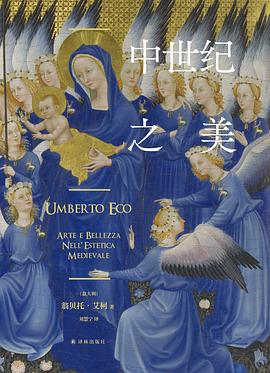WULOLIFE
《中世纪之美》作者: [意] 翁贝托·艾柯 出版社: 译林出版社
《中世纪之美》作者: [意] 翁贝托·艾柯 出版社: 译林出版社
Couldn't load pickup availability
Description
内容简介 · · · · · ·
纪美学理论、审美体验和艺术实践的作品。中世纪之美在艾柯笔下呈现出自成一体的活力,它继承了古希腊和古罗马的传统,直到发展出成熟且具有批判性的观念体系,对现代所继承的传统修正。
艾柯的论述从中世纪文本中汲取了神学、诗学、神秘主义、柏拉图主义的思潮,他探讨的艺术作品涵盖了教堂、雕塑、珠宝、绘画、音乐和古抄本。经过艾柯的解读和阐释后,中世纪的美学思想和艺术作品流溢出一种原始和独特的美感,它的缜密性和普适性直至今天都能够在我们身上激发出新鲜的见解。
——————————————————————————————————
中世纪是大教堂的世纪,上帝之树,千枝凌空,万叶纷披;中世纪是大城堡中世纪是手抄本的世纪,神秘的文字寂寂地轩昂在灿烂的羊皮纸上。艾柯徘徊在教堂和城堡,翻把读者引入圣域一瞥艺术的神性之光。
——中国美术学院教授 范景中
艾柯的《中世纪之美》带领读者走出两个常见的误区:一、中世纪不存在美学;二、即便存在,那也是以智性美代替了世俗意义上的审美感性。
——复旦大学特聘教授,艺术史和美学学者沈语冰
博学如艾中世纪美学。他反对将中世纪视为“蒙昧时期”,而将其视为欧洲近代文明的坩埚。毕达哥拉斯主义的数字之美,加洛林文艺复兴的人文之美,爱留根纳的秩序之美,直到托马斯•阿奎那,确立了中世纪经院美学的庞大系统。这是著作等身的艾柯在博士论文后的第二本书,他自嘲说:“我以年轻学者的笨拙方式讲述了一个故事,但时至今日,我依然相信这个故事。”——时至今日,我们依然相信艾柯。
——复旦大学教授,书评人,豆瓣网艾柯小组组长 马凌
这部轻松易读的作品直到今天都与我们息息相关,艾柯显然对中世纪艺术充满了热爱。
——《波士顿环球报》书评专栏作者罗伯特•泰勒
你会发现市面上没有哪本书比艾柯的这部作品更审慎、更优美、更精妙、更予人以启发。
——《艺术月刊》书评作者 AC 巴雷特
